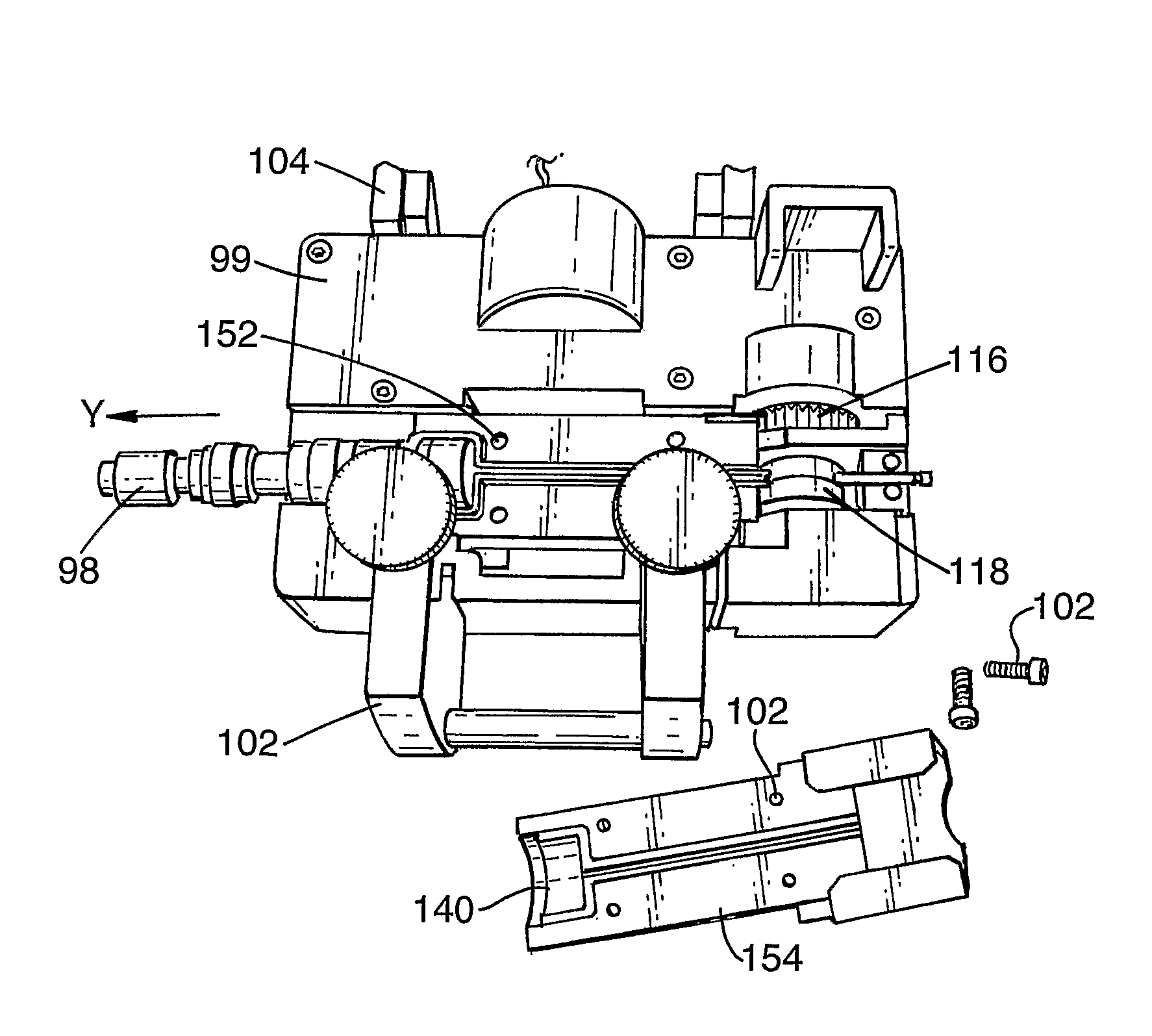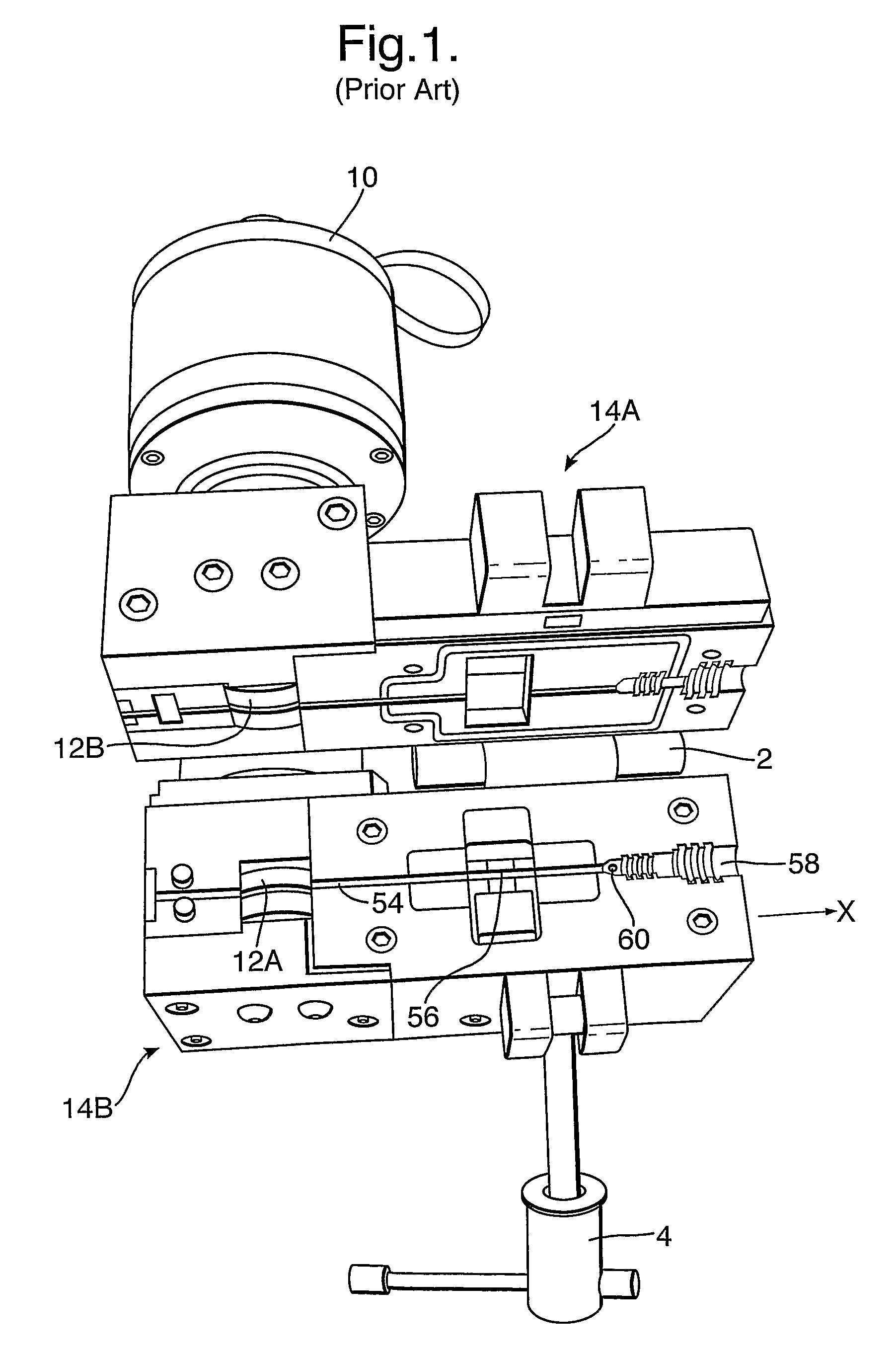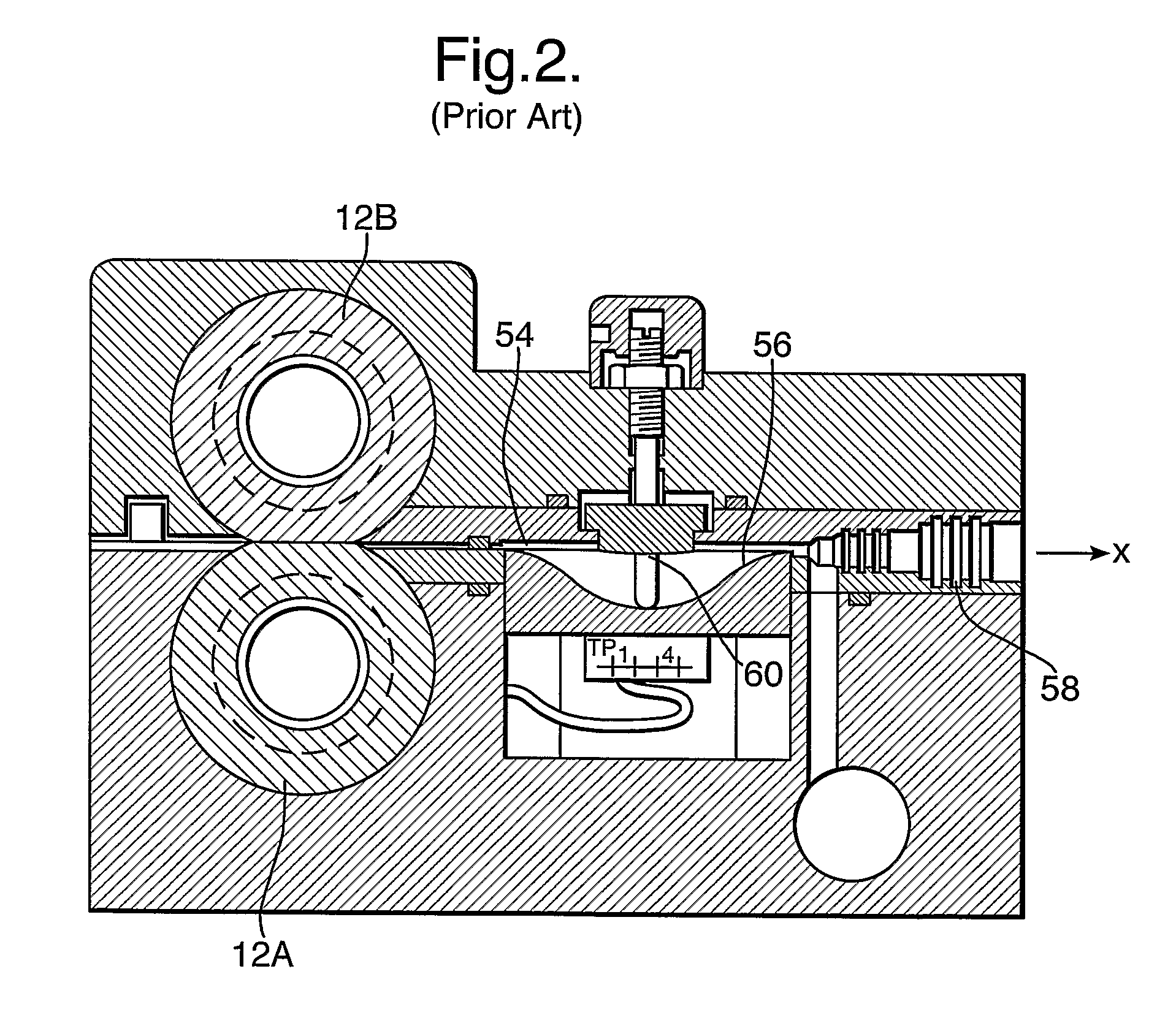Optical fibre installation apparatus
a technology of optical fibre and installation apparatus, which is applied in the direction of cables, cables laying apparatus, instruments, etc., can solve the problems of physical damage, affecting the performance of optical fibre, and prone to buckling of optical fibre units
- Summary
- Abstract
- Description
- Claims
- Application Information
AI Technical Summary
Benefits of technology
Problems solved by technology
Method used
Image
Examples
Embodiment Construction
[0021]The applicants have now devised a new blowing head which addresses the above problems, to provide a solution to overcome the issues related to fibre buckle, excessive air loss, bi-directional installation, inflexibility in use with different-sized fibre bundles and tubes, and cost.
[0022]According to a first aspect of the invention there is provided a blowing head for installing blown cable, comprising a low-inertia motor using electrical current, operable to obtain the advance of the cable within the blowing head, adjusting means operable to vary the level of current of the motor, and low-inertia sensing means to sense movement and changes in the level of movement of the cable within the blowing head, wherein in use the adjusting means varies the level of current used by the motor in response to changes in the level of movement sensed by the sensing means, and wherein the varying level of current does not exceed a maximum current level.
[0023]According to a second aspect of the...
PUM
 Login to View More
Login to View More Abstract
Description
Claims
Application Information
 Login to View More
Login to View More - R&D
- Intellectual Property
- Life Sciences
- Materials
- Tech Scout
- Unparalleled Data Quality
- Higher Quality Content
- 60% Fewer Hallucinations
Browse by: Latest US Patents, China's latest patents, Technical Efficacy Thesaurus, Application Domain, Technology Topic, Popular Technical Reports.
© 2025 PatSnap. All rights reserved.Legal|Privacy policy|Modern Slavery Act Transparency Statement|Sitemap|About US| Contact US: help@patsnap.com



